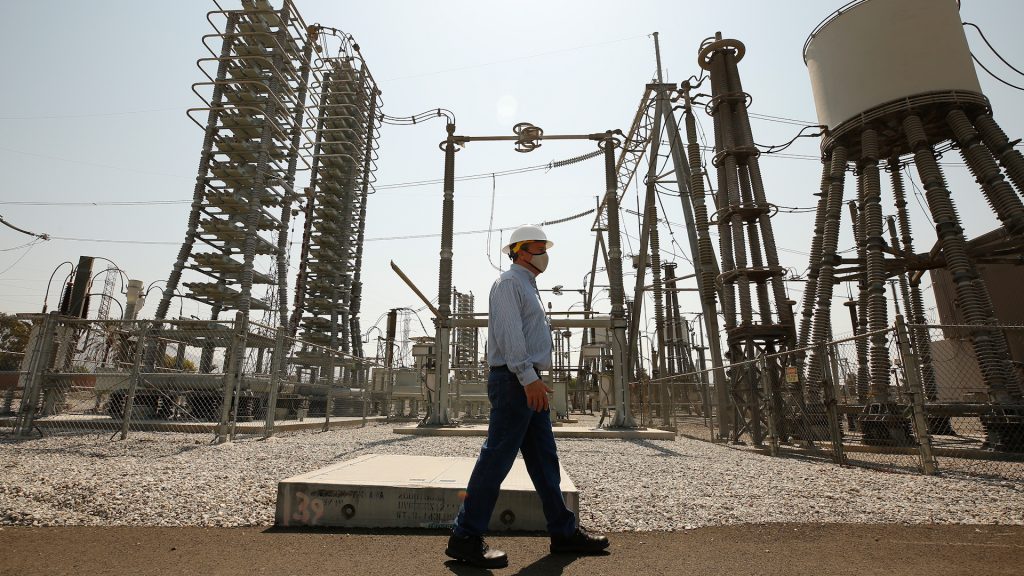Electricity use in US could surge 25% by 2030, double by 2050

Analysts projected that electricity demand in the United States will grow 25% by 2030 and 78% by 2050, according to a new report from global consulting firm Inner City Fund (ICF). The forecast marks a sharp increase from historical trends and projections from 2024.
The report cited artificial intelligence, cloud services and cryptocurrency mining as key drivers behind rising demand, along with the expanded use of electric vehicles, building electrification and the growth of data centers.
Where will electricity usage increase the most?
Electricity demand will rise unevenly across the country, with certain regions expected to see particularly steep growth, according to ICF. Demand in areas such as the Dominion Energy territory within the Pennsylvania-New Jersey-Maryland Interconnection (PJM) region, Southern Company in the Southeast, and the Electric Reliability Council of Texas (ERCOT) West could climb more than 7.1% by 2035. Peak demand in those regions could rise by more than 5.6% compared to 2025.
In Texas, the ERCOT system attributes nearly one-third of its projected increase to large-scale loads like data centers, industrial operations and cryptocurrency mining. Similarly, the PJM region, which spans 13 mid-Atlantic and Midwest states plus Washington, D.C., foresees 35% of its load growth through 2040 from data centers, electric vehicles and semiconductor manufacturing.
The California Independent System Operator (CAISO) projected that 35% of its 2040 electricity demand will come from electric vehicles, data centers and building electrification.
These regional patterns reflect how new technologies and industries reshape local power needs. As the economy evolves, other areas could also see demand spikes tied to shifts in energy use, manufacturing and digital infrastructure.
Unbiased. Straight Facts.TM
Global consulting firm Inner City Fund projects U.S. electricity demand will grow 25% by 2030 and 78% by 2050, far outpacing previous forecasts.

Can the grid keep up with rising electricity demand?
The projected surge in electricity demand could strain the United States’ power grid in the coming years. While current reserve margins remain healthy, ICF analysts warned they could drop below recommended thresholds by 2030 without major infrastructure upgrades.
If new generation capacity is not added, ICF modeling suggests the U.S. could face power shortfalls as early as 2028. ERCOT and the Midcontinent Independent System Operator (MISO) are expected to feel the pressure first, with PJM Interconnection close behind.
How will this affect household costs?
Residential electricity prices could increase between 15% and 40% by 2030, depending on the utility and local market conditions. ICF estimated that by 2050, those rates could double in some regions.
Rising wholesale prices, capacity charges and the cost of new grid infrastructure all contribute to higher electricity bills. As utilities invest in new generation, transmission and distribution systems, those costs are often passed down to consumers through higher rates.
In the short term, the National Energy Assistance Directors Association (NEADA) projected the average U.S. household will spend $784 on electricity this summer alone — a 12-year high.
That figure reflects increased usage due to hotter temperatures and price hikes tied to a tighter energy market. NEADA Executive Director Mark Wolfe said electricity prices tend to stay elevated once they rise, making the current surge particularly concerning for low- and middle-income households.
What are the proposed solutions?
ICF recommended an “all-of-the-above” strategy to address the growing demand.
“Success will require nuanced pricing, temporal considerations and customer engagement, including demand-side management programs which can deliver fast, affordable solutions while scaling for long-term capacity, reliability and affordability,” Anne Choate, ICF’s executive vice president for energy, environment and infrastructure, said in a statement.
This includes deploying new natural gas, wind, solar, nuclear and energy storage resources. To meet future needs, annual generation capacity additions must double to around 80 gigawatts by 2045.
To help manage rising electricity costs, ICF recommended that households and businesses use programs that improve energy efficiency, install smart meters and adopt behind-the-meter solutions like rooftop solar panels and battery storage. While these steps won’t solve the problem entirely, they can reduce peak demand and ease strain on the grid, helping to limit consumer cost increases.
What role does grid infrastructure play?
Expanding power generation alone won’t solve the problem. Utilities must also modernize the transmission and distribution network to move electricity where needed. The report highlighted solutions like dynamic line rating, which adjusts transmission capacity in real time based on weather, allowing more power to flow without new construction.
As major tech companies expand their AI operations, electricity demands are surging. Meta plans to build a $10 billion AI data center in northeastern Louisiana, powered in part by nuclear energy. The company is seeking developer proposals to support the project, which Louisiana Gov. Jeff Landry called “game-changing.”
Microsoft, OpenAI and Elon Musk’s xAI are also pursuing nuclear power to meet the energy needs of large-scale AI infrastructure. But the move has sparked pushback. Environmental groups warned Meta’s plant may rely too heavily on natural gas, potentially raising energy prices for nearby residents.
While demand forecasts remain uncertain, ICF stressed that planning can’t wait. Shifts in AI efficiency, trade policy or federal incentives could alter the outlook, but utilities and regulators must begin upgrading infrastructure and investing in solutions now to avoid future reliability risks and rising costs.





